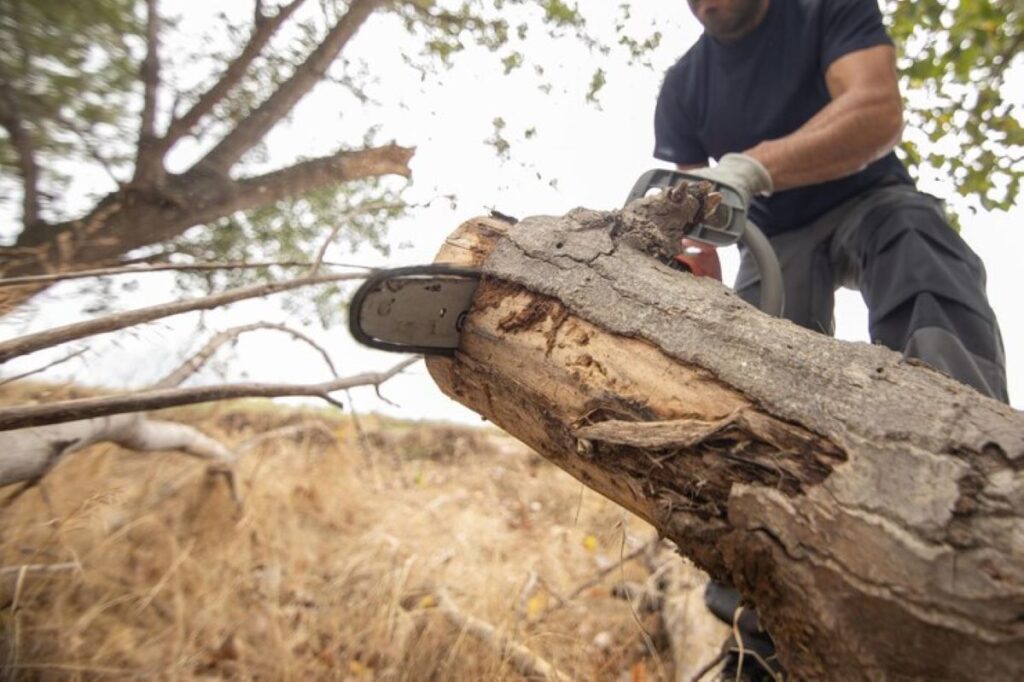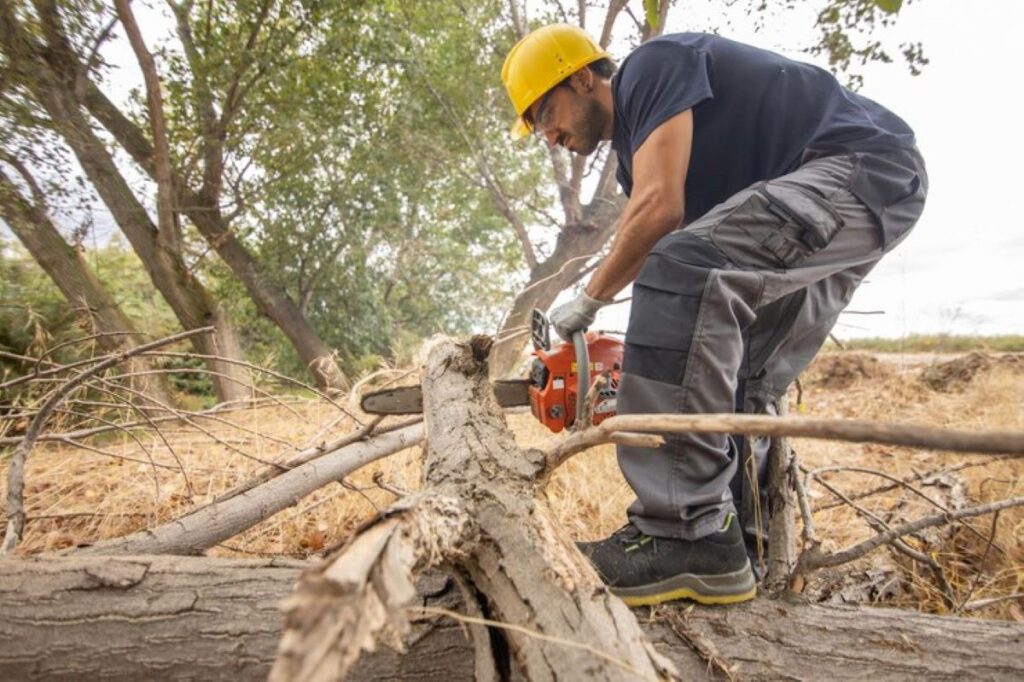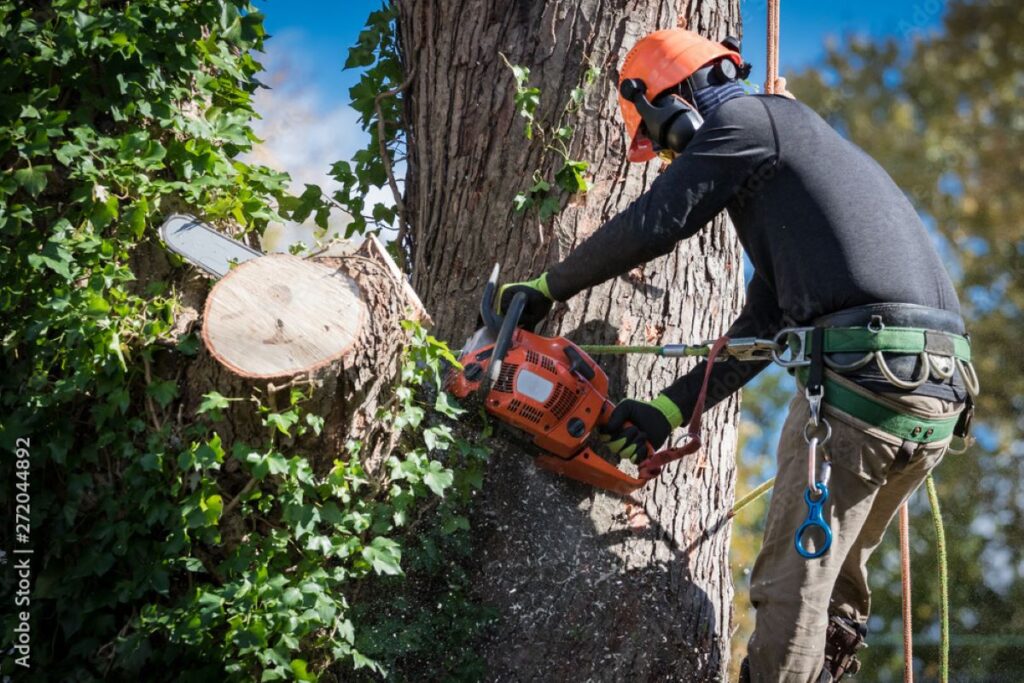Tree removal is an essential aspect of property management in North Shore, especially when trees pose a threat to safety or the health of the surrounding environment. This article delves into crucial aspects of tree removal, including the process involved, safety measures, legal considerations, and the environmental impact it can have.
Understanding the Basics of Tree Removal
Before delving into the specifics of tree removal, it’s important to understand its fundamental concepts. Tree removal is not just about cutting down a tree; it involves several considerations, including tree health, safety, and environmental impact.
The Importance of Tree Removal
The removal of trees serves various important purposes. Trees that are diseased, dead, or structurally compromised can pose significant risks to people and property. Moreover, removal may be necessary to free up space for construction projects or to improve landscaping aesthetics.
Additionally, tree removal north shore can help maintain the overall health of a landscape. By removing unhealthy trees, homeowners can encourage the growth of healthier plants and trees, ultimately leading to a more vibrant ecosystem. This practice can also prevent the spread of pests and diseases that may affect other nearby flora, thereby promoting a healthier environment for both plants and wildlife.
Furthermore, tree removal can play a crucial role in fire prevention, especially in areas prone to wildfires. By clearing out dead or overgrown trees, property owners can create defensible space around their homes, significantly reducing the risk of fire damage. This proactive approach not only safeguards personal property but also contributes to the overall safety of the community.
Key Steps in the Tree Removal Process
The tree removal process consists of several key steps to ensure it is done correctly and safely. Initially, an assessment is conducted to evaluate the tree’s condition and the surrounding area. This might include identifying nearby structures, power lines, and other hazards.
Following the assessment, a plan is formulated that typically involves securing the site, gathering necessary equipment, and determining the best method for removal. Once the plan is in place, the tree can be felled in a controlled manner, ensuring minimal disruption to the surrounding environment. This might involve techniques such as directional felling, where the tree is cut in a way that directs its fall away from obstacles, or using ropes and pulleys for larger trees to ensure precision.
After the tree has been removed, the process doesn’t end there. Stump removal or grinding is often the next step, which involves either extracting the stump entirely or grinding it down to below ground level. This is essential not only for aesthetic reasons but also to prevent potential hazards and to allow for new growth in the area. Additionally, the debris generated from tree removal can be repurposed; branches can be chipped for mulch, while larger logs can be used for firewood or other landscaping projects, promoting a sustainable approach to tree management.
Safety Measures for Tree Removal
Safety is paramount when it comes to tree removal. It is essential to take the necessary precautions to protect not only the workers but also people and property nearby.
Necessary Equipment for Safe Tree Removal
Having the right equipment is crucial for safe tree removal. This includes chainsaws, ropes, hard hats, gloves, and safety goggles. Protective gear helps to reduce the risk of injury, while equipment like ropes ensures that the tree falls in the intended direction.
In addition to personal protective equipment, having a first aid kit nearby is also recommended. The unpredictability of tree removal necessitates being prepared for emergencies. Additionally, using equipment such as a wood chipper can help manage the debris created during the removal process, making the site safer and more organized. A well-maintained chipper can also expedite the cleanup process, allowing for a more efficient workflow.
Precautions to Take Before Tree Removal
Prior to removing a tree, certain precautions should be taken to ensure the safety of the removal team and the surroundings. One of the first steps is to clear the area of any obstacles, such as debris or other vegetation, that could pose risks during the removal process.
Furthermore, securing the site and informing nearby residents about the tree removal schedule can help prevent accidents. It may also be necessary to contact utility companies if there are power lines in the vicinity. It’s also advisable to conduct a thorough assessment of the tree’s condition, as well as the surrounding environment. Understanding the tree’s lean, the health of the wood, and the presence of any nearby structures can significantly influence the removal strategy. This assessment can help in planning the safest approach, ensuring that all potential hazards are addressed before work begins. Additionally, having a designated lookout can enhance safety by monitoring the area for any unforeseen dangers during the removal process.
Legal Considerations for Tree Removal in North Shore
Understanding the legal aspects of tree removal is vital for property owners in North Shore. Different regions may have specific regulations governing tree removal practices and permits.
Local Regulations and Permits
In North Shore, certain local regulations dictate when and how trees can be removed. It is often required to obtain a permit before proceeding with the removal of large trees, especially those located in conservation areas. These regulations are designed to protect the local ecosystem, ensuring that the removal of trees does not adversely affect wildlife habitats or contribute to soil erosion.
Individuals looking to remove trees should consult local authorities or their website for guidance on the permitting process. Failing to comply with these regulations can lead to significant fines and legal troubles. Additionally, property owners may be required to provide a detailed plan outlining the reasons for removal and any potential impact on the surrounding environment, which can include assessments of nearby flora and fauna.

Potential Penalties for Non-Compliance
Ignoring local regulations can result in penalties that can be both financially and legally burdensome. Homeowners may face fines that can range significantly based on the type of tree, its size, and the location of the removal. For instance, the removal of a protected species or a tree in a designated historical area could incur higher penalties, reflecting the community’s commitment to preserving its natural and cultural heritage.
Moreover, penalties may involve mandatory restitution or tree replacement, leading to further expenses and complications. In some cases, property owners may also be required to participate in community reforestation efforts, which can involve planting new trees in designated areas. It is, therefore, crucial to be well informed about the legalities surrounding tree removal in North Shore, as understanding these regulations not only helps avoid penalties but also contributes to the overall health of the local environment.
Hiring Professional Tree Removal Services
While some individuals may consider self-removal, hiring professional tree removal services can save time and ensure safety. Professionals bring expertise and experience to the table, making the process more efficient. They understand the nuances involved in tree removal, such as the tree’s health, location, and surrounding environment, which can significantly impact the removal process.
Benefits of Hiring Professionals
One of the major benefits of hiring professionals is their knowledge of industry best practices. They are trained to handle various types of trees and are equipped to deal with uncommon situations that may arise during removal. For instance, they can assess whether a tree is diseased or infested, which could complicate the removal process and necessitate special handling to prevent the spread of pests or diseases to other trees.
Furthermore, professional services often include additional components, such as stump grinding and clean-up. This saves homeowners the hassle of dealing with subsequent tasks after the tree has been felled. Many companies also offer follow-up services, such as soil restoration and planting new trees, which can help maintain the aesthetic appeal of your landscape and promote a healthier environment.
How to Choose the Right Tree Removal Service
Selecting the right service provider is essential for a successful tree removal experience. Homeowners should begin by researching local companies and reading customer reviews to gauge their reputation. It’s also beneficial to check if the company is a member of any professional organizations, as this often indicates a commitment to industry standards and ongoing education.
- Ensure that the service provider is licensed and insured to protect against any potential liability.
- Ask for references and past work examples to assess their expertise.
- Get quotes from multiple providers to compare pricing and services offered.
Ultimately, the goal is to find a company that aligns with both safety standards and budgetary constraints. Additionally, consider the level of customer service offered by the company; a responsive and communicative team can make the entire process smoother and more reassuring for homeowners. Engaging with the service provider about your specific needs and concerns can also lead to tailored solutions that best fit your property’s unique requirements.
Environmental Impact of Tree Removal
Tree removal has profound implications for the environment, and understanding these impacts is crucial for responsible management of natural resources.

How Tree Removal Affects the Ecosystem
Removing trees can disrupt local ecosystems, affecting wildlife habitats and plant life. Trees contribute to air quality and provide shelter for numerous species. When they are removed, it can create an imbalance that may take years to restore.
Additionally, the removal of trees can lead to soil erosion, affecting water quality in nearby rivers and lakes. This erosion occurs because trees help hold the soil in place, preventing runoff during rainfall. The loss of tree cover can also result in increased temperatures in the area, as trees provide shade and help regulate local climates. This change can be detrimental to sensitive species that rely on specific temperature ranges for survival.
Furthermore, the removal of trees can significantly impact the carbon cycle. Trees act as carbon sinks, absorbing carbon dioxide from the atmosphere and storing it in their biomass. When trees are cut down, not only is this carbon storage lost, but the act of cutting can release stored carbon back into the atmosphere, exacerbating climate change. The cumulative effect of tree removal can lead to a decline in biodiversity, as many species are unable to adapt quickly enough to the changing environment.
Sustainable Practices in Tree Removal
To mitigate the negative environmental impacts, employing sustainable practices in tree removal is essential. This includes assessing the reason for removal and considering alternatives, such as tree trimming or repositioning.
Moreover, utilizing eco-friendly techniques and minimizing waste during the removal process can significantly contribute to environmental preservation. Service providers should prioritize responsible disposal methods for the wood and other by-products of tree removal. For instance, instead of simply discarding branches and leaves, these materials can be repurposed into mulch or compost, enriching the soil and supporting new plant growth. Additionally, replanting native tree species in the area can help restore the ecosystem and provide habitats for wildlife that may have been displaced.
Community involvement is also a key aspect of sustainable tree management. Engaging local residents in tree planting initiatives or educational programs about the importance of trees can foster a sense of stewardship and responsibility towards the environment. By promoting awareness and encouraging active participation, communities can work together to ensure that tree removal is conducted thoughtfully and with an eye towards long-term ecological health. Checkout more guidence on Inner West Tree Removal Services: Affordable and Reliable Options
In conclusion, tree removal in North Shore necessitates a comprehensive understanding of the process, safety measures, legal considerations, and environmental impacts. Whether you are contemplating a DIY approach or seeking professional help, being informed ensures safer and more responsible tree management.

